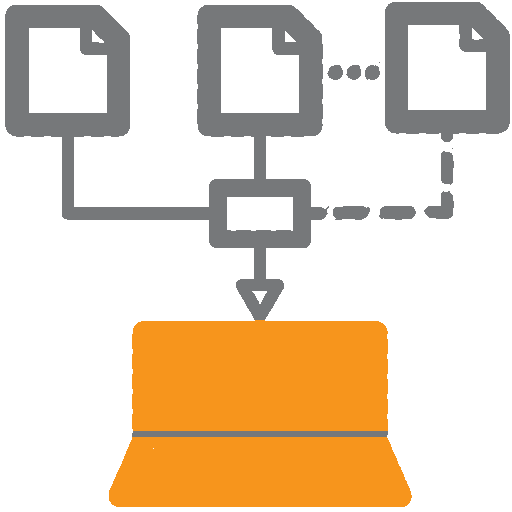Digital solutions to specific challenges in the food system’s hubs
Digital agriculture end users may be generally grouped into four hubs, namely, input, production, distribution and consumption. Each hub has unique resources and needs in terms of digital agriculture innovations, and each hub faces unique challenges for which digital agriculture could offer solutions. The hubs are not mutually exclusive, as any given individual may function within multiple end user hubs. The users in these groups, along with the key challenges these users face and the prioritized digital solutions to overcome these challenges, were identified through a consultation process and a workshop with the key experts in the (digital) agricultural sector in Grenada.
Click on the arrows / hubs below to find out more about users demand for digital agriculture technologies within each of the food system hubs.
ACROSS THE FOOD SYSTEM
Across the food system
Challenge
Technology
Analysis
Improving tracing and tracking in the value chain
Improving market information for farmers and other players to inform choices in the value chain
Scaling new approaches and the use of digital technologies
Barcoding for traceability
Advanced analytics/Apps for market analysis
Platforms for peer-to-peer knowledge sharing
INPUT
PRODUCTION
DISTRIBUTION
CONSUMPTION
Input Hub
The Input Hub relates to the provision of agricultural inputs for crop and livestock production. Such inputs include seeds, feeds, agrochemicals, machinery, and finance. In Grenada, the input hub is primarily composed of local retailers of imported products. End users in this hub seek decision support tools for optimized input identification and selection, as well as improved product monitoring and traceability.
Challenge
Technology
Analysis
Improving the land tenure situation for smallholder farmers
Improving government services (extension, water, etc)
Satellites/GPS information for land tenure determination

Remote sensing/analytics for early-warming systems
Production Hub
The Production hub is dominated by small-scale family farms with limited economic viability that are primarily oriented towards self-consumption and local markets, with the exception of the spice section and cacao growers that have a main focus on international markets. Despite generally low digital literacy rates, there is demand for digital agriculture solutions from Production hub end users. Advisory services, weather and vegetation dynamics monitoring, increased financial services access, and improved product traceability would all assist farmers in augmenting productivity and gaining access to international commodity markets.
Challenge
Technology
Analysis
Making farming systems effective and efficient based on quantitative information
Sensors/applications for real-time location/health information on livestock
Computer/Smart phone applications to support farmers’s decision making
Advanced analytics + user software for (digital) extension services
SMS/IVR systems for decision support for lowertech farmers
IoT for input information/ smart farming/ irrigation
Distribution Hub
The Distribution hub consists of all actors in the value chain between farmers and the consumer, such as traders, transporters, and processors. Food distribution in Grenada focuses on imports from the USA, primarily for hotels and resorts in the tourism sector. A distribution network for the export of raw nutmeg, bananas, cocoa, fruits, and vegetables is also well established. The processing and manufacturing industry consists of 265 small and 9 medium sized processors , but the expensive value-added products, such as nutmeg oil and oleoresins, are all manufactured outside of Grenada. Significant barriers for this hub include poor market access, low mechanization, and poor monitoring and traceability systems.
Challenge
Technology
Analysis
Improving the efficiency of processing processes

Advanced analytics for monitoring and sorting (post-production/ distribution)
Consumption Hub
The Consumption hub is predominated by two major categories of food consumers: tourists who consume primarily from hotels, resorts, and restaurants, and Grenadians who consume directly from farms or from local grocery stores. In both cases, product monitoring and traceability offers important opportunities for consumers to make informed purchasing decisions in terms of the quality, origin, and environmental impact of their food purchases. This also enables producers of higher quality products to promote and market them as such.
Challenge
Technology
Analysis
Improving access to nutritional, environmental footprint and origin information
Smart phone applications for e-labeling and nutritional information



